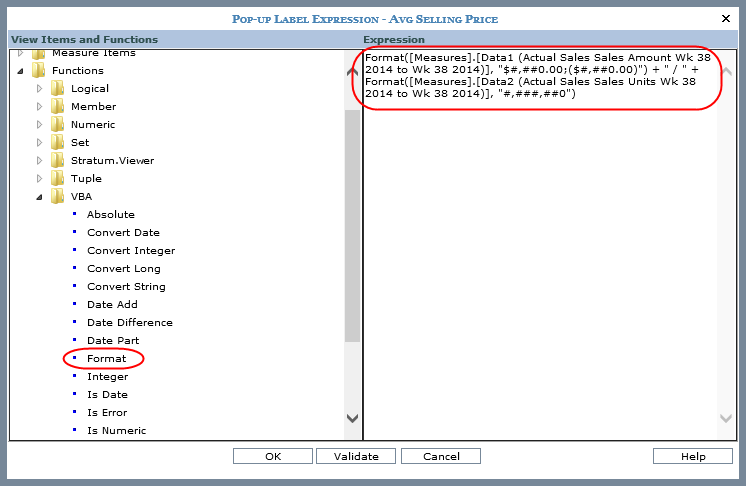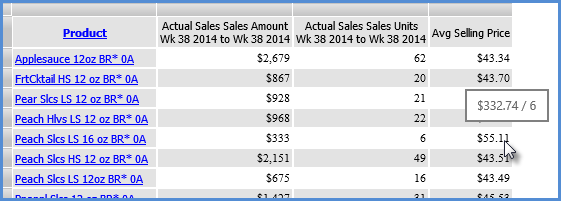
You can define pop-up labels for individual measure items using the Pop-up Label Expression property. You can include static text, variables, or a combination. When you specify a pop-up label, it takes precedence over other properties that would normally impact what displays in pop-up label text. If a pop-up label is defined, then it will display as the pop-up label text. If no pop-up label is defined but a hyperlink exists on the measure item, then the hyperlink displays in the pop-up label. If no pop-up label or hyperlink is defined but there is a drilldown view defined for the Measure Items axis, then the pop-up label will be the text ‘Drill To” followed by the name of the drilldown view.
The basic steps for defining a pop-up label and a few examples follow.
1. Right-click the measure item in the view or view explorer and select Properties.
2. In the Properties window, select Yes for the Pop-up Label Expression property.
3. In the Pop-up Label Expression window, set up an expression to define the pop-up label and then click OK.
Click an item from the View Items and Functions side of the window to add it to the expression,
Use double quotes to enclose static text.
Use a plus sign + to concatenate parts of a multi-part expression.
This expression uses static text in combination with information from the view. The pop-up label will vary as you click on each Map It! measure item value based on corresponding Customer Sold-To member information.
"Click here to go to MapQuest for " + [Customer Sold-To].[Customer Sold-To].CurrentMember.Properties("SldTo Long Description")

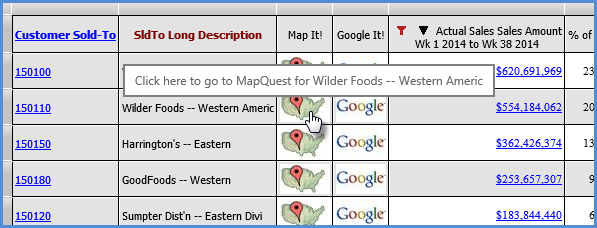
This example creates a pop-up label consisting of multiple lines of text to display descriptive information (attribute relationships) for a dimension in the view. Putting the attribute information in a pop-up label rather than in columns of the view saves some room.
Here’s the example expression. The text in quotes at the beginning of each line of the expression is static text. The next part in each line of the expression are Customer Sold-To attribute relationships.
“Address: " + [Customer Sold-To].[Customer Sold-To].Properties("SldTo Address Line 1") +
“City: " + [Customer Sold-To].[Customer Sold-To].Properties("SldTo City") +
“Email: " + [Customer Sold-To].[Customer Sold-To].Properties("SldTo Email Address") +
“Phone: " + [Customer Sold-To].[Customer Sold-To].Properties("SldTo Phone Number")

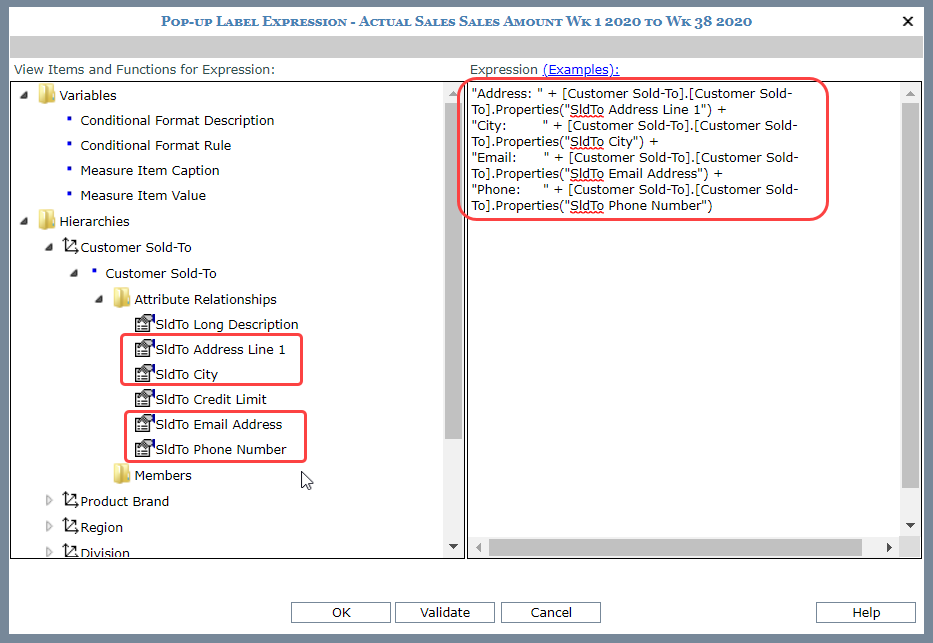
This expression uses only the Measure Item Value variable.
#MeasureItem(“Value”)


This expression uses static text in combination with the two Measure Item variables.
"The value of " + #MeasureItem("Caption") + " is " + #MeasureItem("Value")


This expression uses two of the Conditional Format variables separated by static text (a dash mark). The pop-up label is for a measure item that has a conditional format defined for it.
#ConditionalFormat("Name") + " - " + #ConditionalFormat("Description")


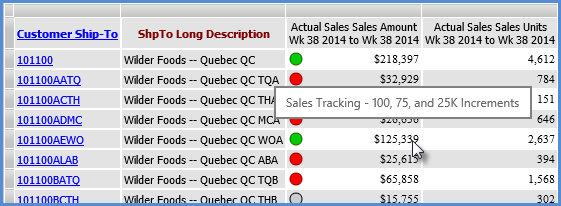
This expression uses the IIf function to define a conditional expression. The label will display one of two statements depending on the conditions in the view grid. If Gross Margin Amount is less than $5,000, the first statement will display. If the margin is greater than $5,000, then the second statement will display.
IIf([Measures].[Data23 (Gross Margin Amount Jan 2014 to Sep 2014)] < 5000, "Product's margin is below the desired level. Place product on the monthly review list." , "Margin is within acceptable range. No action is needed.")
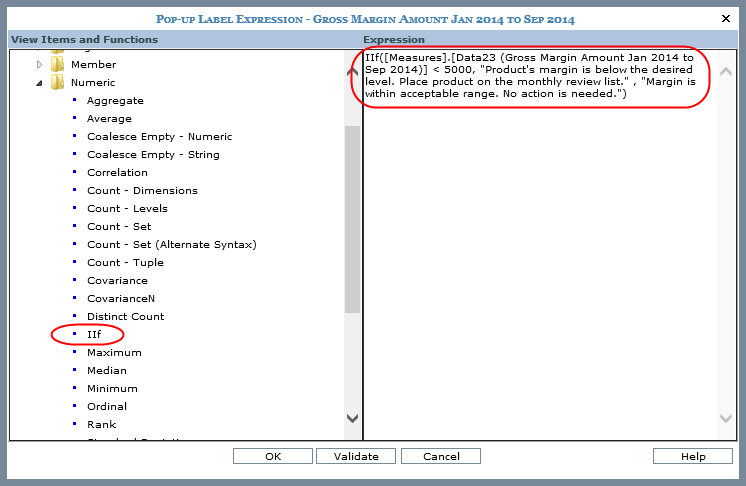
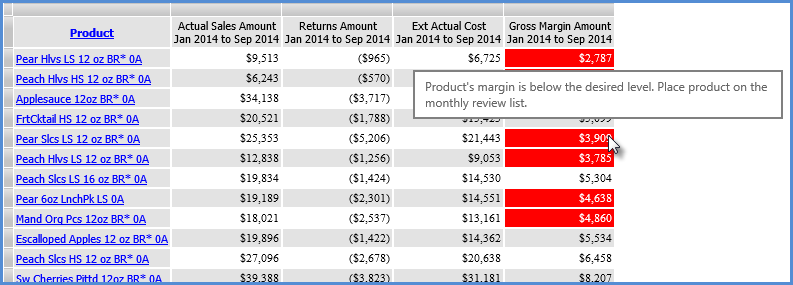
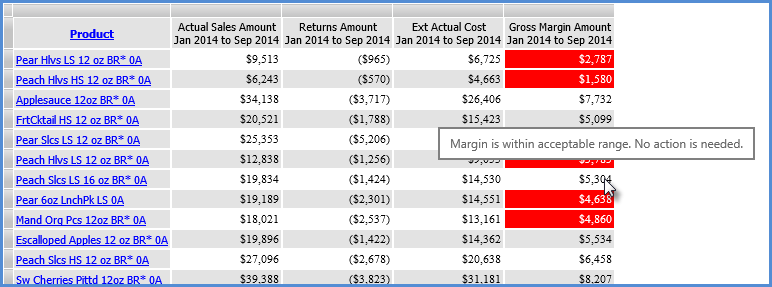
This expression displays the value of a sales amount measure item followed by a division sign and the value of a sales units measure item. The VBA Format function is used to control the display format of the values in the pop-up label. The pop-up label is meant to show the values behind a calculated measure item’s results.
Format([Measures].[Data1 (Actual Sales Sales Amount Wk 38 2014 to Wk 38 2014)], "$#,##0.00;($#,##0.00)") + " / " + Format([Measures].[Data2 (Actual Sales Sales Units Wk 38 2014 to Wk 38 2014)], "#,###,##0")
